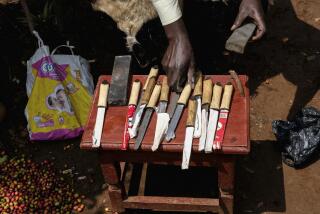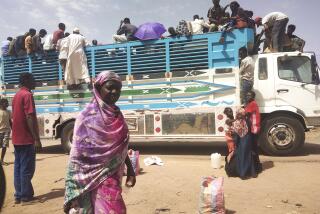Horror in Uganda
As dusk falls across northern Uganda, scores of children begin their nightly trek into the centers of remote provincial towns. They sleep in doorways, on verandas and at drafty bus stations, hospitals and schools. They are known as “night commuters,” and they make the hike from their desolate rural homes because they are afraid.
For almost two decades, a notorious rebel group that calls itself the Lord’s Resistance Army, or LRA, has been terrorizing villagers. It kidnaps adults to haul heavy loads over long distances. But it also steals children, some as young as 8. The LRA forces the boys to become soldiers; the girls become sex slaves.
It also compels its victims to victimize others. Reports abound of youngsters torturing or killing peers who had tried to escape or displeased their captors. Hundreds of youths have shared details of their ordeals with aid workers who have set up live-in trauma counseling centers.
The LRA is led by Joseph Kony, who claims to be acting under divine instruction. It says it is fighting for political recognition, and it denies brutality toward civilians. In one day last month, however, the rebels hacked at least 16 people to death with the victims’ own farming tools. The government of Ugandan President Yoweri Museveni has tried to conduct negotiations with Kony, but there have been no firm results. Officials say that Kony is nothing more than a bandit and that it would be out of the question to give him either amnesty or a political office.
So the cruelty persists. International aid groups estimate that 30,000 children have been abducted in the slow-burning conflict. Although hundreds have escaped, they rarely find peace.
Villages across northern Uganda have been uprooted. The former residents languish in camps, which are cramped and unsanitary. Food, clean water and medical care are scarce. Malnutrition and diseases such as malaria, scabies and tuberculosis afflict many. Those who leave camp to look for work, firewood or edible plants risk being attacked by the rebels, captured in shootouts or blown up by mines that litter the landscape. The rebels often storm the camps to loot supplies and kidnap more victims.
Times photographer Francine Orr reported from the troubled region in September 2003 and April of this year. .
More to Read
Sign up for Essential California
The most important California stories and recommendations in your inbox every morning.
You may occasionally receive promotional content from the Los Angeles Times.










